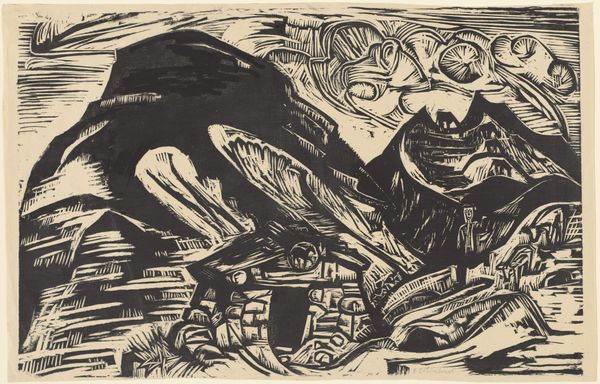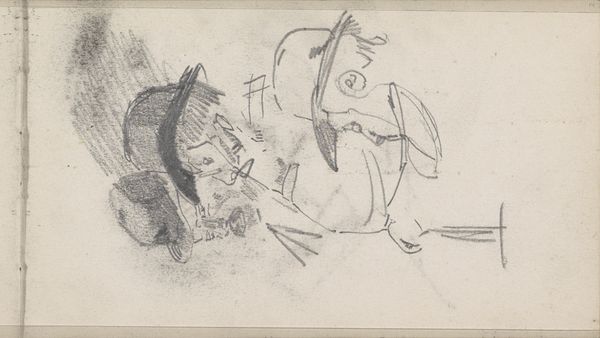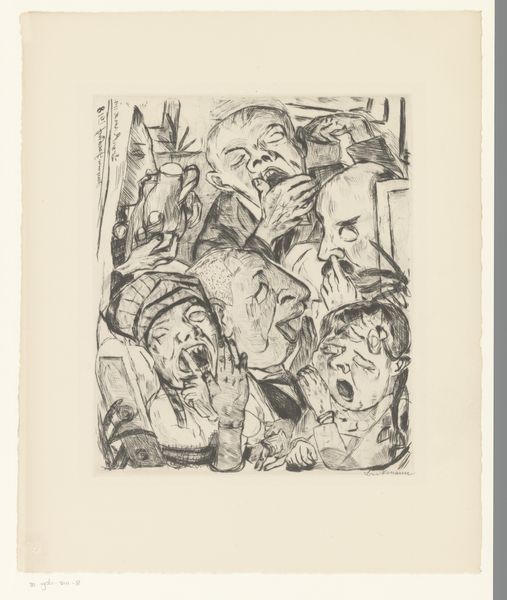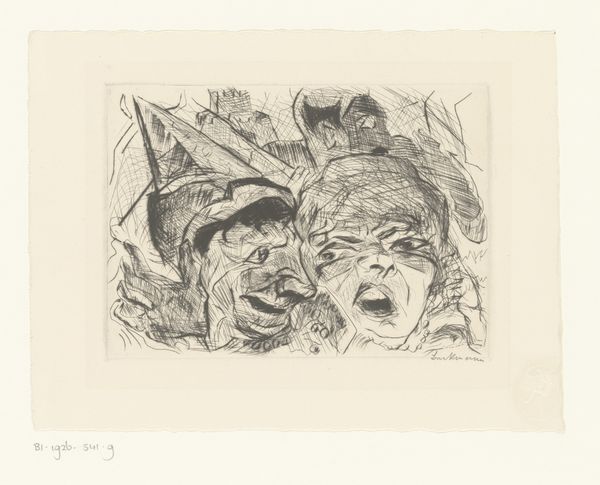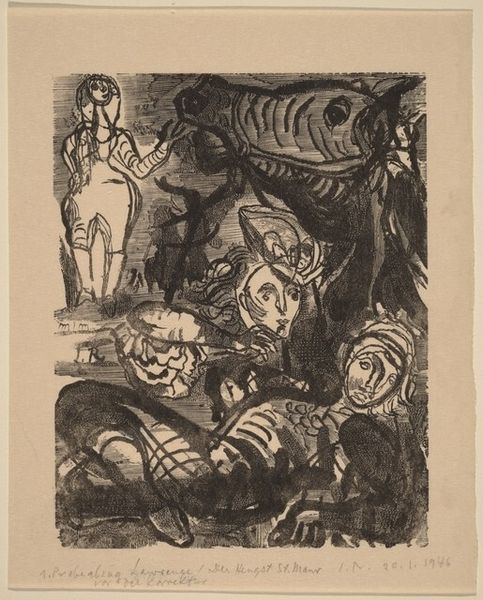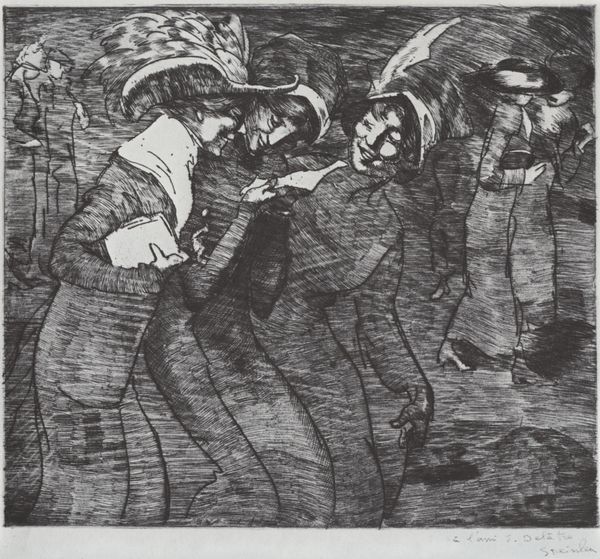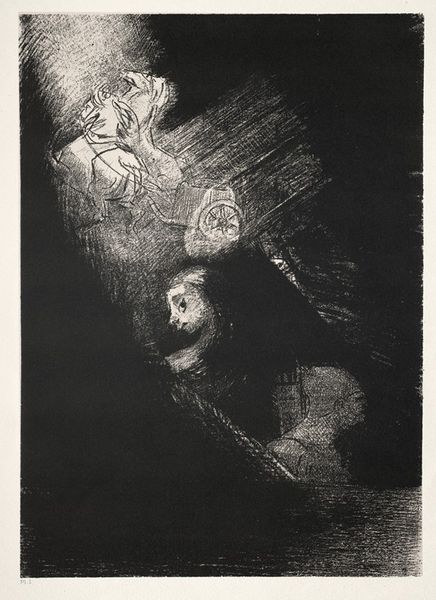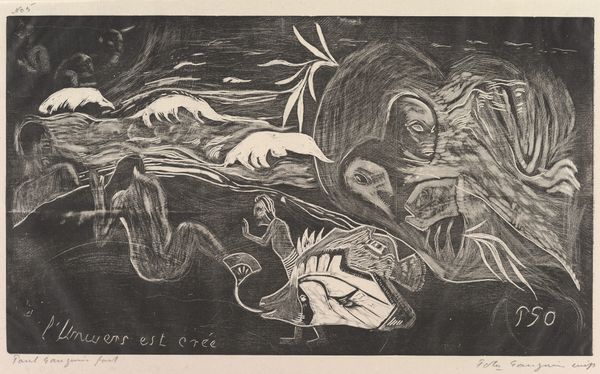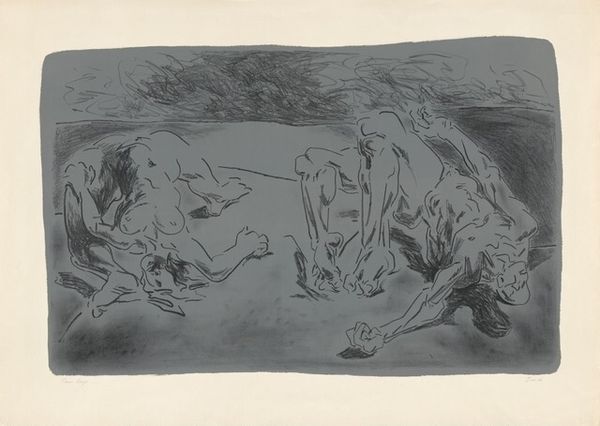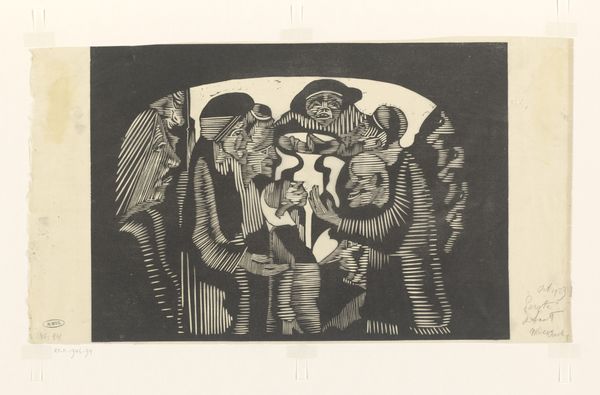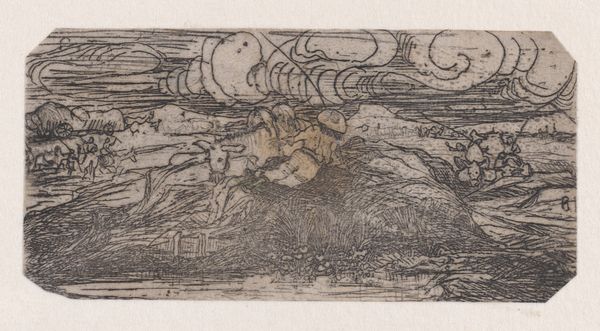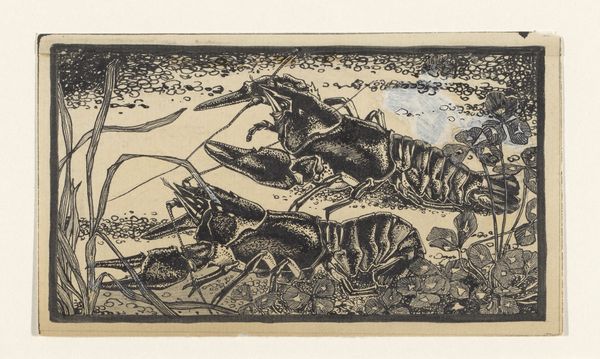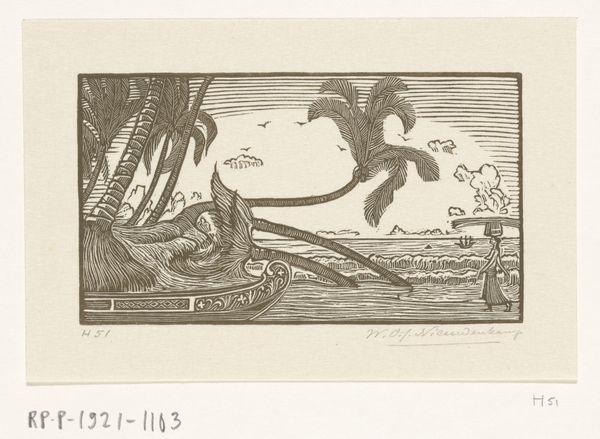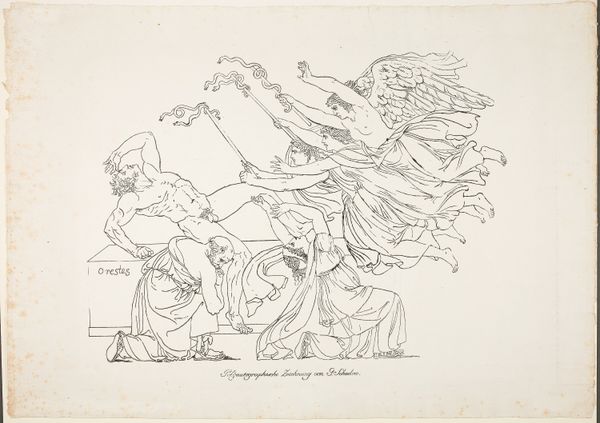
print, woodcut
#
portrait
#
animal
# print
#
old engraving style
#
caricature
#
figuration
#
woodcut
#
line
#
sketchbook drawing
Dimensions: height 182 mm, width 258 mm
Copyright: Rijks Museum: Open Domain
Editor: Here we have Bernard Willem Wierink's "Heads of a Lion and Lioness," a woodcut print created between 1918 and 1919. I find the textures quite striking. There’s a certain roughness, but also incredible detail in the animals' manes. What elements stand out to you? Curator: The formal arrangement immediately arrests attention. Observe the composition; the two heads are interwoven, almost forming a single mass. Note the high contrast—the stark black lines against the paper creates a visually intense experience. Consider also the use of line; it’s not merely descriptive but actively constructs the forms. Do you perceive how the lines create a sense of volume and depth, despite the flatness of the medium? Editor: Yes, the lines really define the contours and give them weight. Is there anything particular about the way Wierink used the woodcut technique itself? Curator: The very nature of woodcut demands a deliberate and precise approach. Wierink capitalizes on this inherent characteristic. Notice how each cut contributes to the overall pattern. The texture isn't accidental; it's a calculated articulation of form. Moreover, the limitations of the medium—the inability to render subtle gradations of tone—force the artist to rely on bold strokes and decisive marks. The image becomes, in essence, a study in controlled contrast. The medium itself becomes integral to understanding the work. Editor: I see it now. It's less about representation and more about the artistic choices involved in creating the image itself. The lines, the contrasts, all intentionally arranged. Thanks so much for sharing that perspective! Curator: Precisely. By concentrating on these inherent elements, we begin to comprehend the artist's intent and to truly experience the work's visual power.
Comments
No comments
Be the first to comment and join the conversation on the ultimate creative platform.
